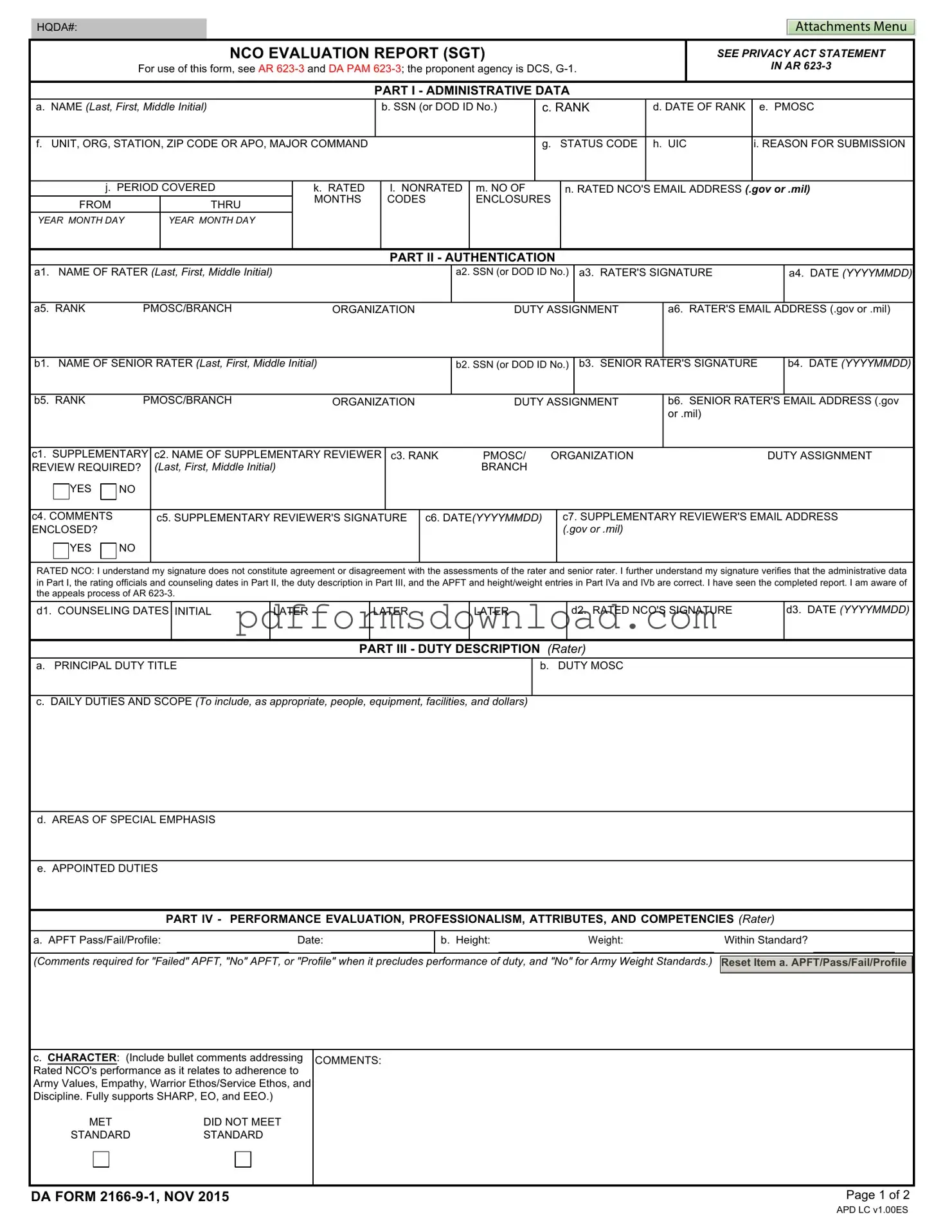What is the purpose of the DA 2166 9 1 form?
The DA 2166 9 1 form is used to evaluate the performance of Non-Commissioned Officers (NCOs) in the U.S. Army, specifically for the rank of Sergeant. This evaluation helps in assessing an NCO's skills, attributes, and overall potential for future assignments. It serves as an official record that contributes to promotion decisions, professional development, and career progression within the military.
Who is responsible for completing the DA 2166 9 1 form?
The completion of the DA 2166 9 1 form involves multiple parties. The primary rater, usually the immediate supervisor of the NCO being evaluated, fills out the majority of the form. The senior rater, who is typically a higher-ranking officer, reviews the evaluation and provides additional insights. Lastly, a supplementary reviewer may also be involved in the process to ensure accuracy and fairness in the evaluation.
What information is required in Part I of the DA 2166 9 1 form?
Part I of the DA 2166 9 1 form requires various administrative data about the rated NCO. This includes the NCO's name, Social Security Number or DOD ID, rank, date of rank, and unit information. Additionally, the form asks for the reason for submission, the period covered by the evaluation, and the rated NCO's email address. This section establishes the basic identification and context for the evaluation.
How does the evaluation process work for the DA 2166 9 1 form?
The evaluation process begins with the rater assessing the NCO's performance across various competencies such as character, presence, intellect, leadership, development, and achievement. Each area is rated as either "met" or "did not meet" the standard, accompanied by comments for clarity. After the rater completes their assessment, the senior rater reviews it, providing their own evaluation of the NCO's potential. The rated NCO also signs the form to acknowledge that they have seen the completed report, although their signature does not imply agreement with the evaluations.
What should an NCO do if they disagree with their evaluation on the DA 2166 9 1 form?
If an NCO disagrees with their evaluation, they have the right to appeal the assessment. The appeals process is outlined in AR 623-3. The NCO should first discuss their concerns with their rater or senior rater to seek clarification. If issues remain unresolved, the NCO can formally initiate an appeal following the guidelines provided in the regulation. This process ensures that all evaluations are fair and accurate.
